Samurai Experience ~ 10 Samurai ~

At A&C Studio Kotonoha in Sugamo, we had an extracurricular activity where we experienced being a samurai. Wearing a hakama and holding a sword, I felt like a real samurai. I actually learned the action of a sword fight, and at the end, I was able to perform it.
Introduction...
Since last year, A&C Studio Kotonoha in Sugamo has been helping us out with several school events, such as Samurai Experience and Ninja Experience.
This was my first time leading a tour, so I thought I'd write an article about the experience.
Actually, I took 10 students with me that day, but there were many who wanted to try it, so I booked an additional day. 19 students tried it over two days. You can see from the photos that it is popular with both men and women, of all ages, Asian students, and European students.
At A&C Studio Kotonoha, you can choose from the four plans below.
①Samurai Experience Plan
②Ninja experience plan
③Samurai & Ninja Experience Plan
④Jikushinkageryu Kenjutsu Experience (Matake Kiri) Plan
This time, we will introduce the ①Samurai Experience Plan from the perspective of the staff of Kudan Institute of Japanese Language & Culture.
Step 1: Change clothes
Both men and women can wear the kimono and obi over their clothes. Since they will be wearing hakama, the bottom of the kimono is tucked into the obi to make it easier to move around.
It was late April, but there were students wearing hoodies (and bare skin), and the students who wore the hoodie over the hoodie looked a bit uncool, so they should have announced that they should wear T-shirts. It's going to be okay as it's summer, but you should be careful in winter.
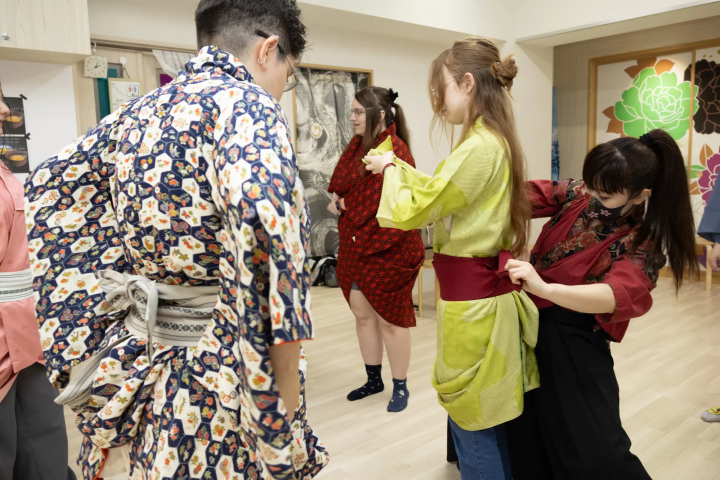
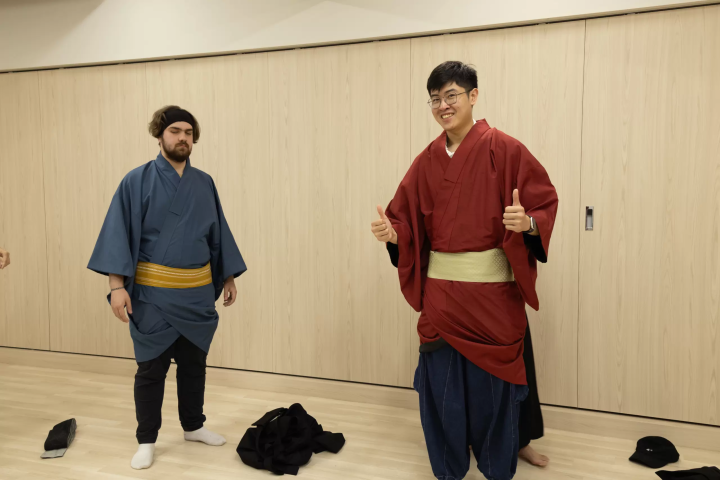
Step 2: Unsheathing and sheathing your sword
First of all, the teachers gave us a demonstration. It was really cool.
After that, you will receive an explanation from the teacher.
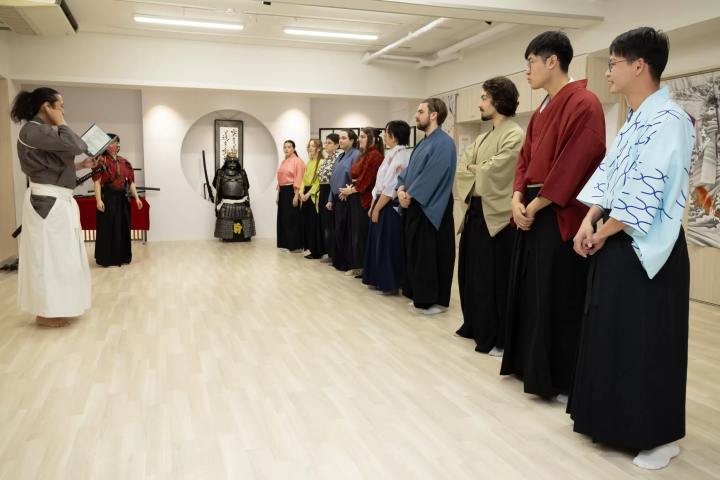
They are listening seriously...
The word "shinken" literally comes from the word katana. A real sword, not a wooden one, is called "shinken" a true sword. From there, it is also used when taking something seriously, as in "taking on something seriously" or "serious fight."
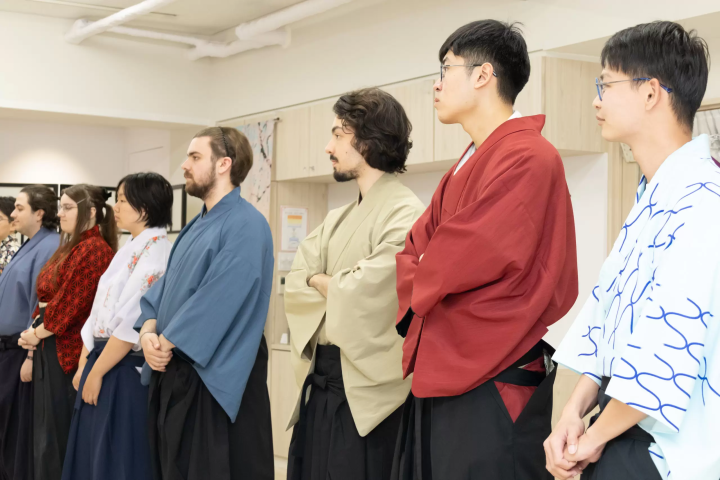
Let's start with a bow. We're going to learn Bushido. It's said that most things that have "道dou(way" in them begin and end with a bow.
Tea ceremony, judo, and kendo in particular begin and end with etiquette.
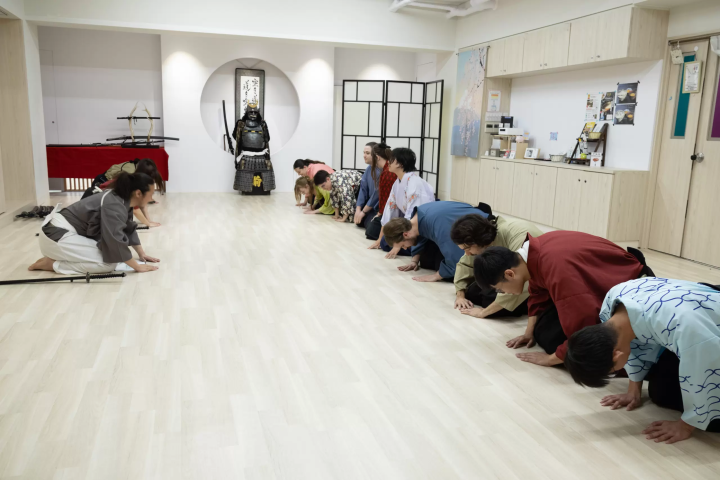
First, practice the movement of unsheathing and sheathing the sword.
Unsheathing the sword is called "Battou(Battoh)", and putting the sword back into the sheath is called "Noutou(Nohtoh)".
These are words you won't learn in Japanese classes! (laughs)
Here is the scene where they are unsheathing their swords. ↓

This is the moment he is about to sheathe their sword.
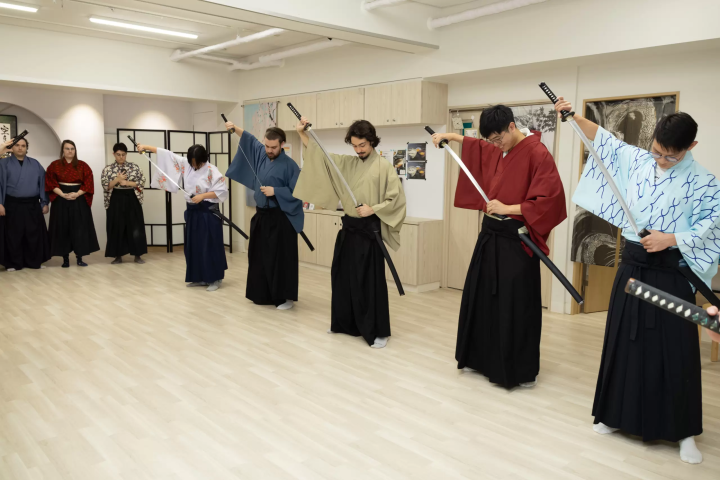
A sword has a specific way to sheathe, so you have to make sure you don't sheathe the wrong way. You can't sheathe a sword without looking at the sheath. I'm sure everyone now realizes just how amazing Kenshin and Tanjiro are lol. If you sheathe a sword while looking at the sheath, you'll get slashed to death in the process... The samurai of the past were amazing...!
Step 3: Swing the sword
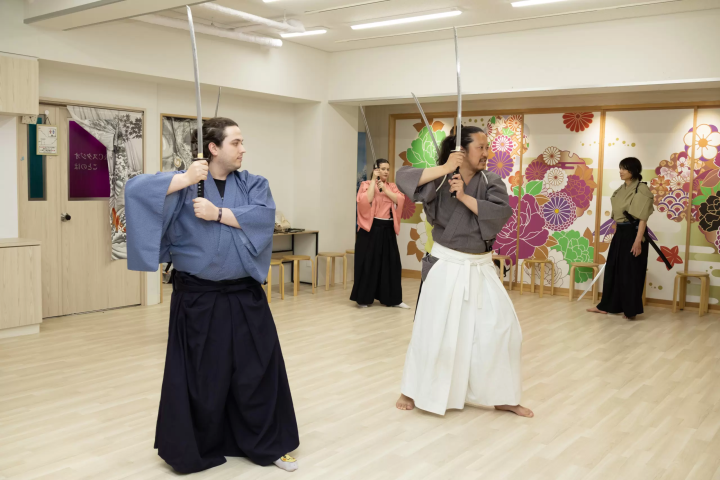
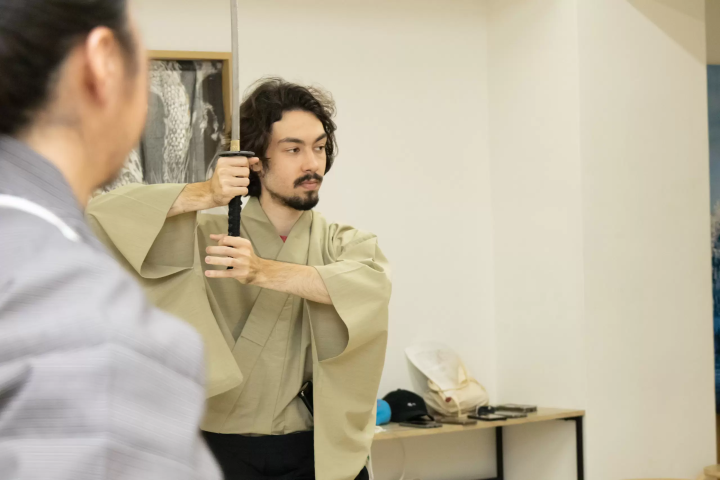

They try to go through the series of movements: unsheathing the sword, swinging it, taking a stance, swinging it again; there is blood on the blade, so you need to swing the sword to remove the blood and then sheathe it.
Step 4: Practice fighting
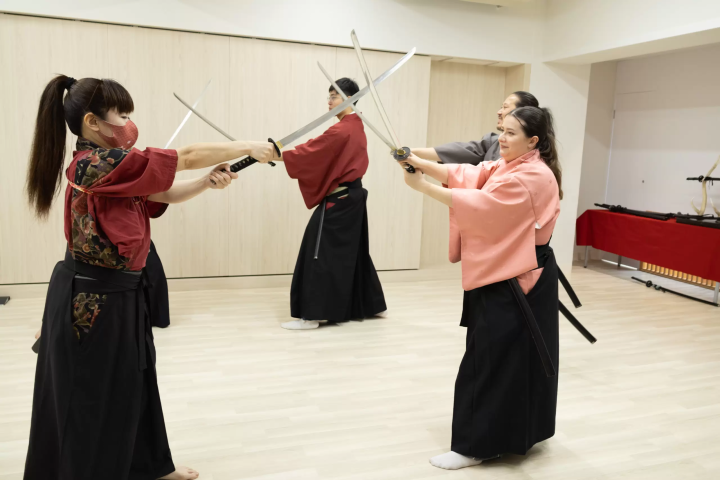
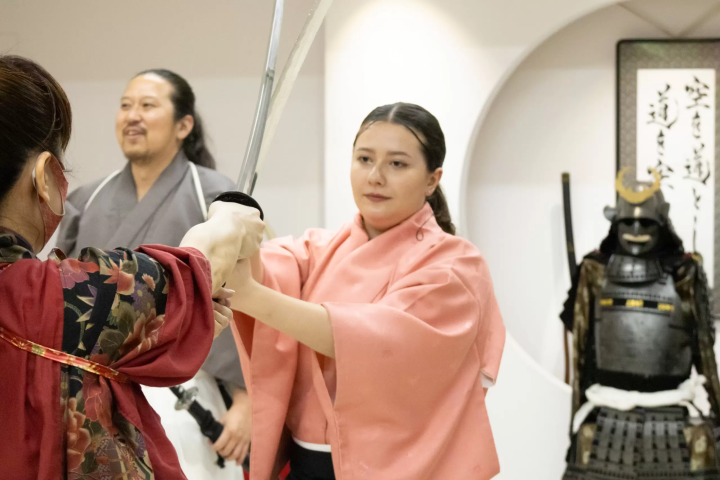
Each student will be paired with a teacher and try to match swords. Will they be able to do it?
Try doing it slowly at first, then a little faster.
First you will move forward, then you are pushed back and receive the sword.
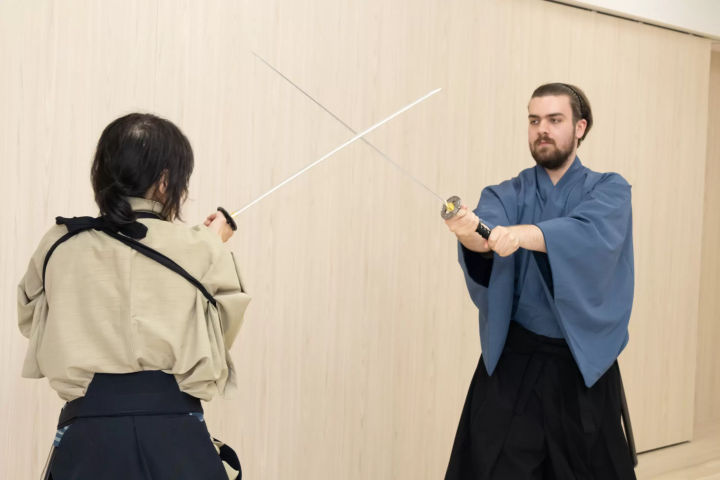
Step 5: Swordfight
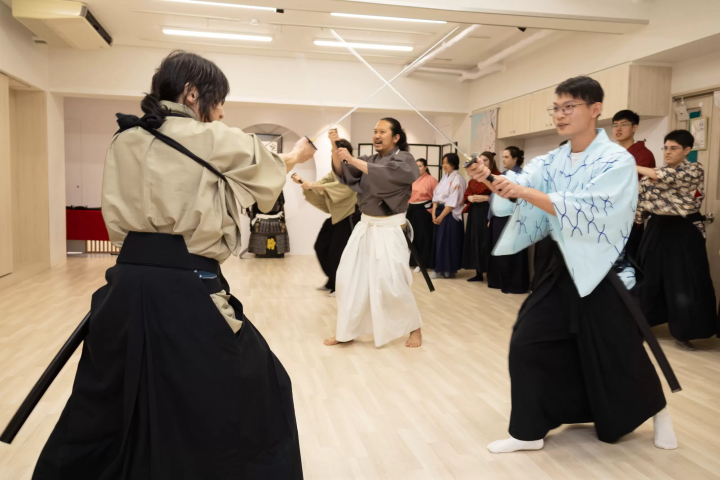
Combining all the practice they have done up until now, they will clash swords with their teachers one last time in a final sword fighting performance.
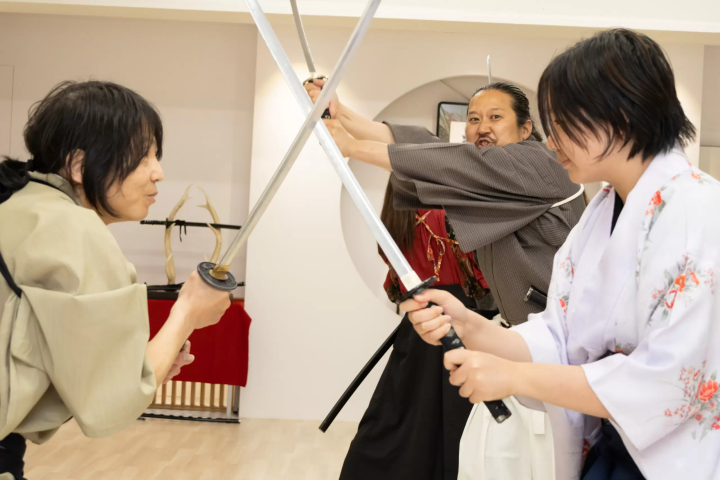
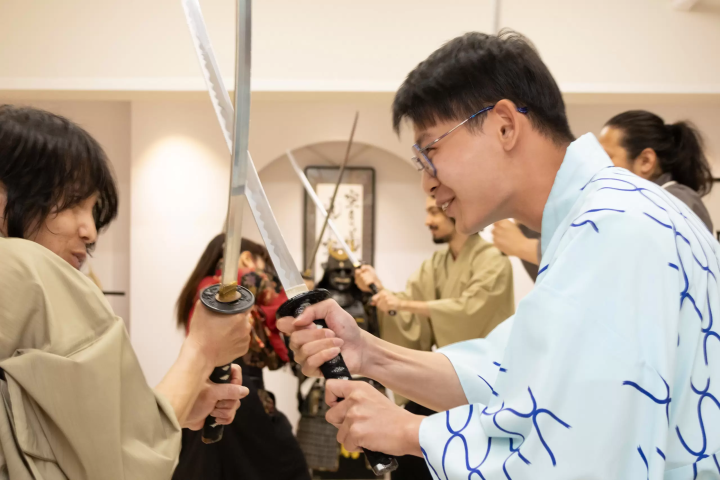
We will also try a sword-fighting match. A sword-fighting match means that the sword thrust by each other is blocked by the tsuba of the sword and the two push each other back. It can also mean a fierce fight in a competition.
That's right, it was also the final scene of Rengoku from Demon Slayer.
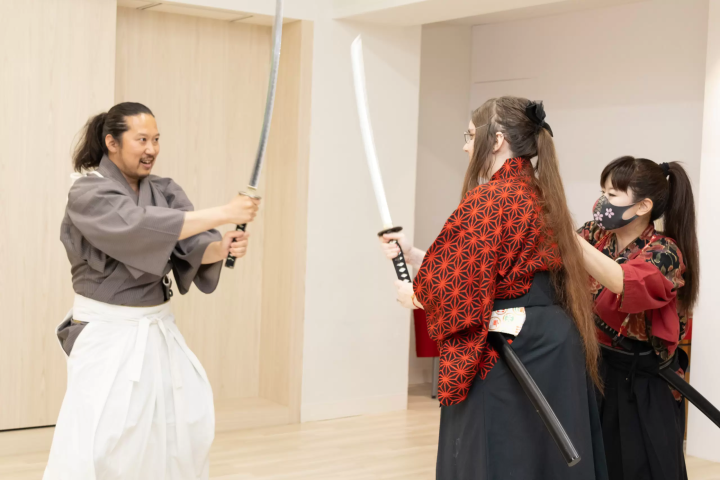

The teacher does a good job and even knocks him down (lol) (for 10 people...)
Thank you, Sensei. The students playing the samurai roles seemed to enjoy it very much because you fought with all your might and fell with all your might.
Step 6: Performance
They play anime music, and then you actually perform some sword fighting. The teacher acts as your partner.
With music playing and the lighting changing a little, everyone feels like an actor in a period drama. You are Tom Cruise or Tanjiro now.
*Due to copyright issues, different music is used when editing the video.
Finally... Group photo and certificate
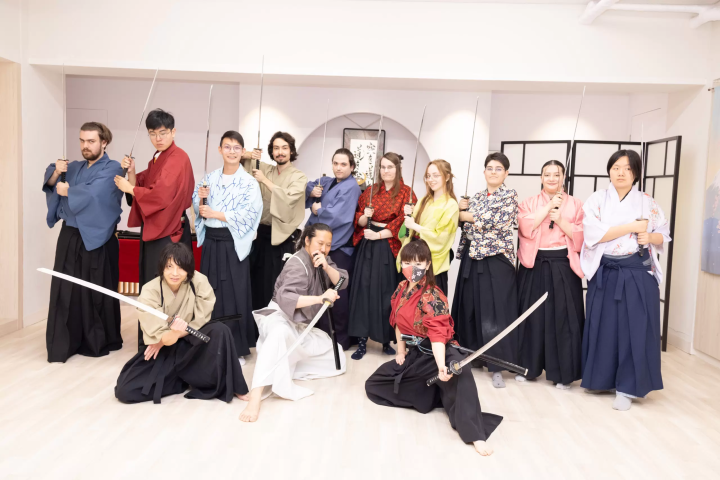
They received a certificate of completion entitled "Menkyo Kaiden" with your name on it!
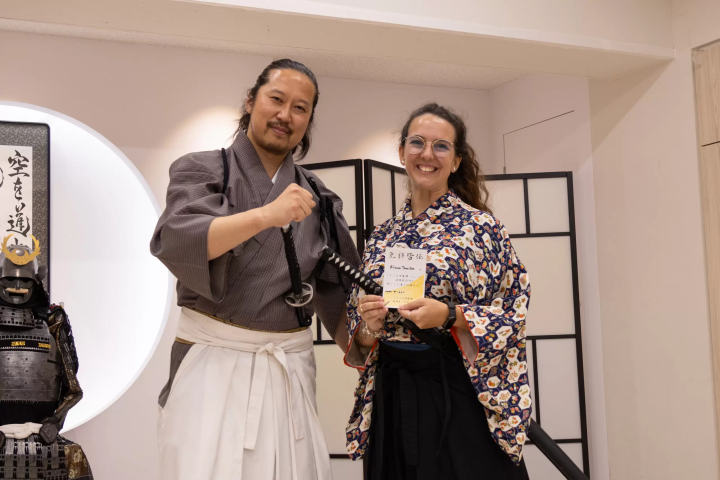
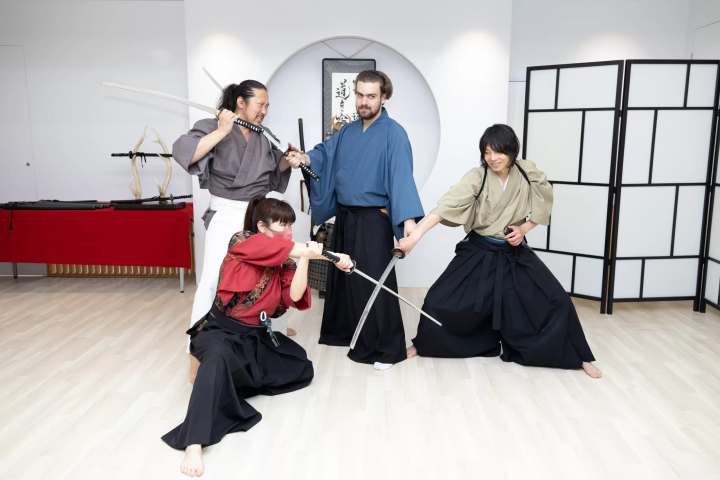
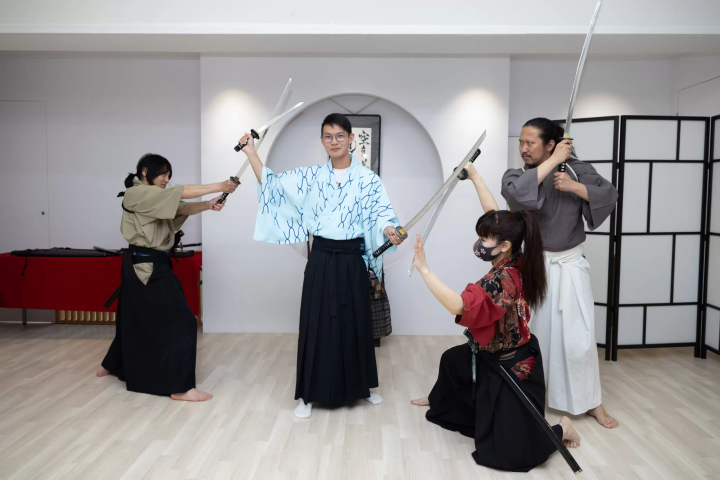
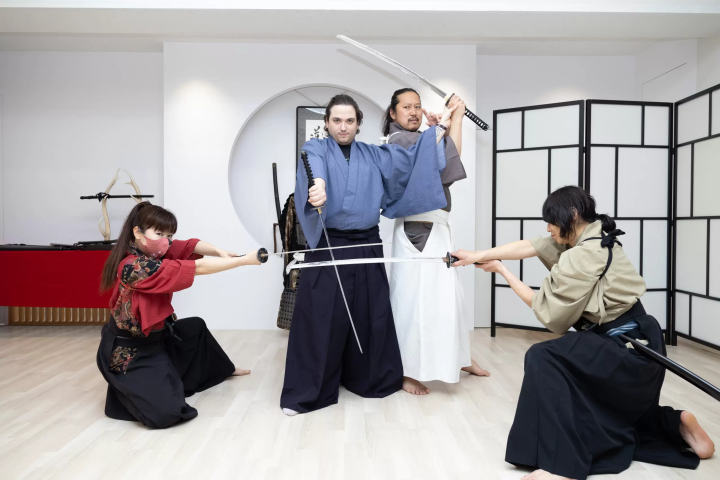
At the end, the students took various poses and even a photo of you taking on three enemies.
It is cool!
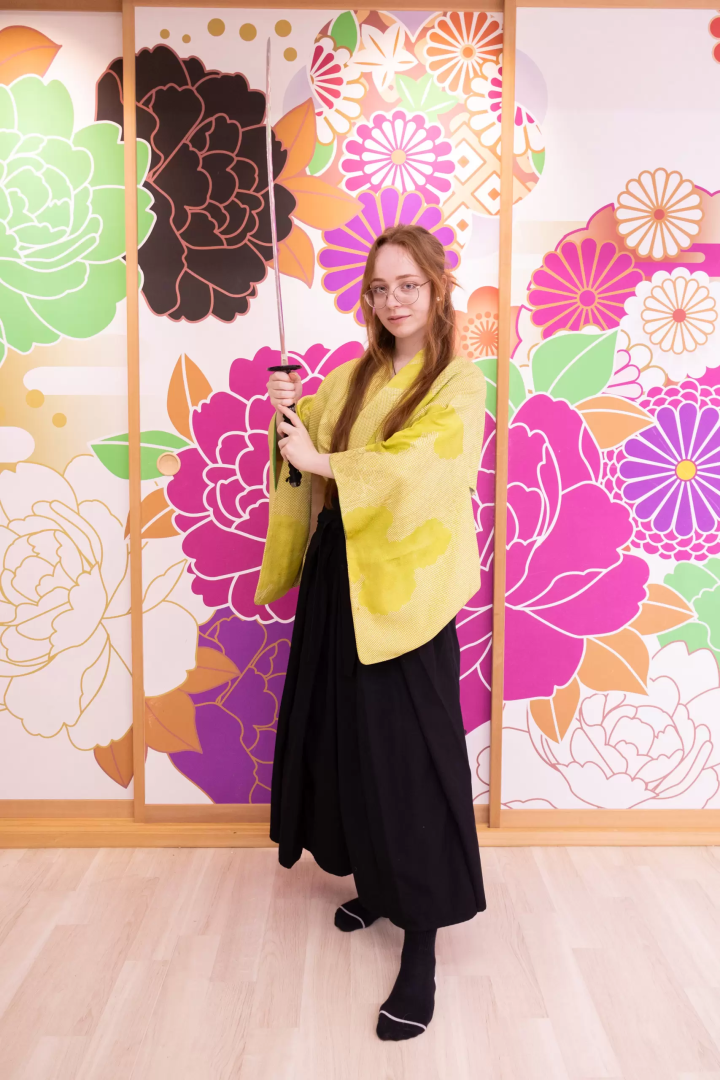
For students studying at Kudan Institute of Japanese Language & Culture, we plan to include this samurai and ninja experience in the extracurricular activities every semester, but I think that even those who are sightseeing can make a reservation by looking at the website. It is close to the station, so we highly recommend it.
Hotels near A&C Studio Kotonoha
Kudan Institute of Japanese Language & Culture is located about 5 minutes walk from JR Suidobashi Station (east exit) and about 10 minutes walk from Jimbocho Station and Kudanshita Station. At any given time, students from 25 to 40 countries study in Japan. At our school, we have events and courses where you can not only learn Japanese but also learn about Japanese culture. In addition to the conversation course, intensive course, and practical Japanese course, we also offer a short-term tea ceremony course and a manga course. You can take a cultural course after your Japanese class. (Manga course is set with conversation course) There are also courses that can be studied online. [Job Preparation Course] for those who are aiming to find a job in Japan, [Business Japanese Brush-up Course] for those who are already working in Japan and can learn the business Japanese and etiquette necessary for working, and the Japanese Language Proficiency Test ( We offer a variety of courses, including the [JLPT Preparation Course] where you can take an online preparation course before the JLPT. For busy people, we can also offer [online private lessons] and [face-to-face private lessons]. Winter holiday courses that include extracurricular activities, spring holiday courses, and summer holiday courses that include travel in addition to extracurricular activities are very popular every year. Summer is especially popular with high school students from various countries, so early reservations are recommended. I am. (It will be closed as soon as the capacity is reached) In addition to English, our school also has staff who can speak Chinese and Korean, so please feel free to contact us.
The contents on this page may partially contain automatic translation.





































![[2026] The Matsusaka Lantern Festival will be held to light up the winter night sky!](https://resources.matcha-jp.com/resize/720x2000/2026/01/05-254777.webp)
![[List of Traditional Industry Experiences] Factory tours and craftsmanship experiences in southern Osaka and Wakayama](https://resources.matcha-jp.com/resize/720x2000/2025/11/06-249221.webp)

![[Coupons available] If you want to enjoy shopping for sporting goods, head to the Alpen flagship store!](https://resources.matcha-jp.com/resize/720x2000/2026/01/16-255845.webp)